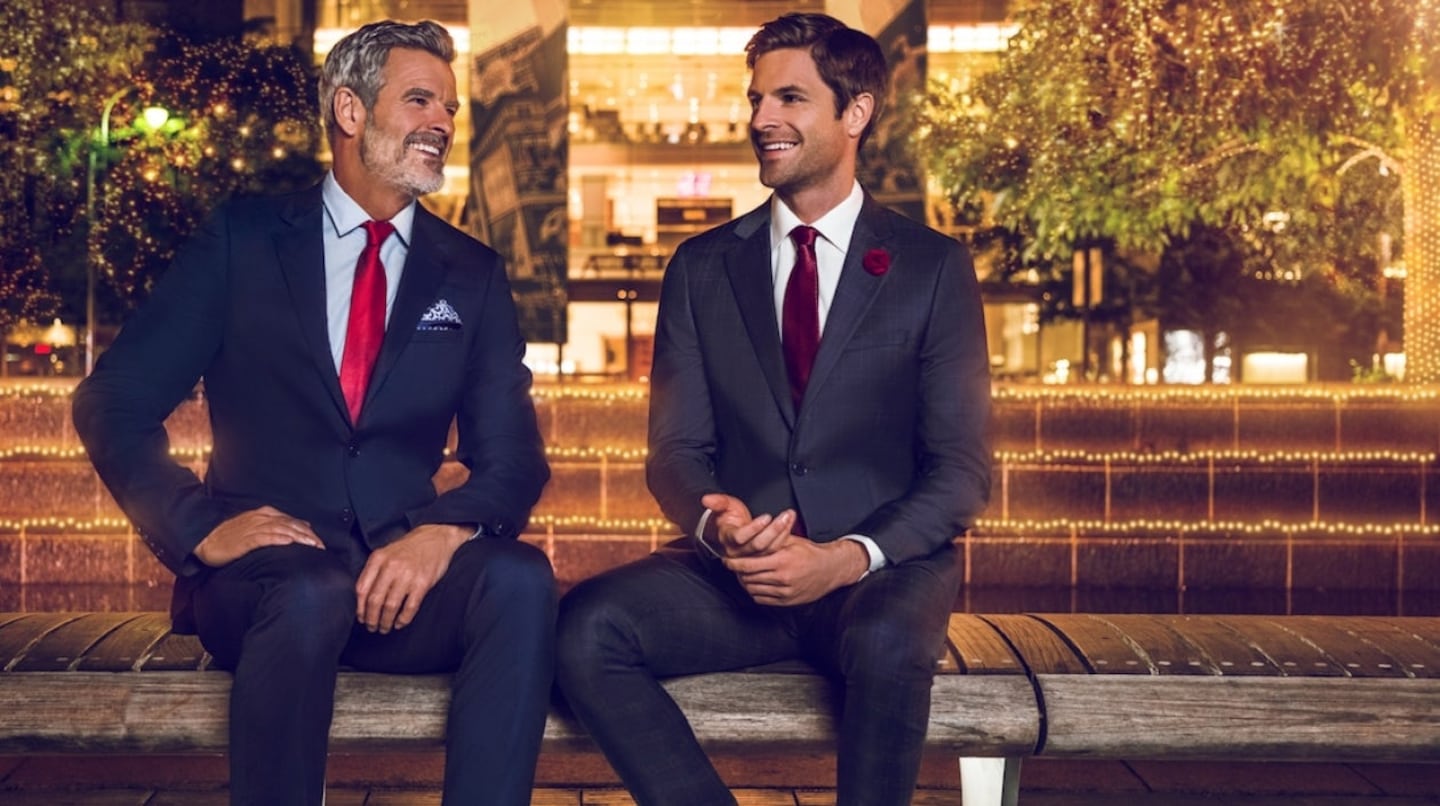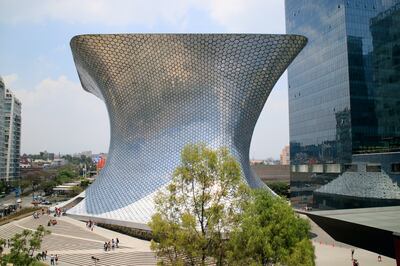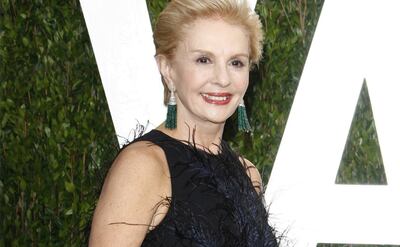
The Business of Fashion
Agenda-setting intelligence, analysis and advice for the global fashion community.

Agenda-setting intelligence, analysis and advice for the global fashion community.

MEXICO CITY, Mexico — For being Latin America's richest man, Carlos Slim is a rather modest billionaire. Aside from a jaw-dropping art collection, he doesn't indulge in the typical trappings of some of his peers, like 160-metre yachts, gold-furnished aeroplanes or lavish mansions in every corner of the world.
The telecoms tycoon, who prefers to drive himself through Mexico City’s frantic streets, wears mostly clothing from his own retail empires and sports no fancy watches. Instead, he’d rather focus on expanding his dominion or finding a new market in which to invest — though that may be harder than it seems.
“He is into almost everything. It’s impossible to live in Mexico without consuming his products or services daily,” says Dolia Estevez, a Forbes magazine contributor who specialises in covering the wealthy and powerful in Mexico.
Slim’s $54.5 billion empire encompasses more than 200 companies, spanning everything from banking to telecoms to construction; oil; restaurants; and, of course, fashion. In fact, a reported 50 percent of his Grupo Carso’s revenues come from his retail division, which includes department stores Sanborns and the Mexican unit of Sears and Saks Fifth Avenue.
ADVERTISEMENT
In the 30 years that Forbes has been tracking the billionaires of the world, Latin America’s count has gone from two in 1987 to 87 today — though other wealth monitors estimate there are more. And roughly 30 percent of them forged their fortune, or at least part of it, in fashion.
The Battle of the Merchant Moguls
"There's a growing sense here of what fashion and its related industries can generate for an economy — from production to distribution to even financing," says Karla Martinez, editor-in-chief of Vogue Mexico and Latin America. "The 'generational bonus' that the Latin American countries have is likely to generate a new breed of entrepreneurs over the next years… from online retailing to new brands and even to manufacturing that may relocate from Asia to serve the markets better."
As Mexico's biggest mogul, Slim is well aware of the lucrative opportunities present in the apparel industry. In 2015, he took a stab at emulating Amancio Ortega's Zara by setting up standalone stores for his fast fashion line, Philosophy Studio Jr. Now he is reportedly looking to join forces with billionaire Piero Solari Donaggio of Chile-based retail powerhouse Falabella, one of the largest in the Latin American region.

Carlos Jereissati Filho, Chief Executive of the Iguatemi Group | Source: Fernando Pinheiro
The move could help him fend off the advances of adversaries like Alberto Bailleres, owner of Mexico's luxury department store El Palacio de Hierro, who is also behind the opening of new standalone stores for Dolce & Gabbana and Saint Laurent; and a rival department store called Liverpool, whose chairman Max David Michel recently oversaw the acquisition of low-cost clothing chain Suburbia from Walmart Mexico & Central America.
With prices as low as $3 for a t-shirt, the profit margin at a bargain player like Suburbia can't be much. But in a country of 130 million where the retailer boasts 119 branches, it doesn't take long to see how it adds up to a hefty bank balance — or why Michel paid $852 million for the chain.
“Opening up the economy to foreign players brings education and technological development and also makes the local industry step up its game to keep up with the competition,” says Sergio Olarte, head of research at BTG Pactual Colombia, a Sao Paulo-based investment bank specialising in wealth and asset management.
This was the case for most of Latin America after the debt crisis of the 1980s began to subside. As international alliances formed, empires and fortunes became bigger and stronger.
ADVERTISEMENT
Walmart’s former local partner, Jerónimo Arango, made part of his $4.2 billion fortune when he sold the majority stake of his discount retailer Cifra to the American giant in 1997. And for its part, Falabella already has plans to enter Mexico (through home improvement stores) in association with Soriana, another retailer, controlled by billionaire families Martin Bringas and Martin Soberón.
Dynasties with Deep Roots
Alberto Bailleres, like many fashion billionaires in Latin America, took the reins from a family business founded by European immigrants. His fortune comes mostly from mining, but he can credit a significant part of his $10.8 billion to the fashion franchises he operates in Mexico and El Palacio de Hierro's mid-range and luxury offerings, which includes concessions for Louis Vuitton, Burberry, Loewe and Prada, among many others.
On the other hand, rival Liverpool’s ability to engage the Mexican middle class is what made a fortune for its late founder, Maximino Michel Surbeville, Max David Michel’s uncle. His acquisition of Suburbia could not only boost his budding fortune of $1.7 billion, but it might put him ahead of other rivals, like the Coppel family of the namesake retail chain; and Antonio Chedraui Obeso of the Chedraui stores. Both specialise in selling an assortment of low-cost products including fashion, accessories, and cosmetics.
According to Kerry Dolan, wealth assistant managing editor at Forbes, selling in the mass value segment is what has helped many fashion billionaires survive the political and economic turmoil that characterises this region of extreme wealth and extreme poverty.
If anyone knows about Latin America’s challenges, it is Michel of Liverpool. The Calderón family, who made their fortune thanks to Santiago-based retailer Ripley, recently terminated a deal in which they intended to sell 25.5 percent of their shares to Michel. Lázaro Calderón Volochinsky, general manager of the Chilean store, attributed it to changes in the two countries’ respective political and economic environments.
For Latin Americans who have left the region, the luxury sector often brings in the riches. Venezuela-born Carolina Herrera built a billion-dollar business in the US and designers like the late Oscar de la Renta, a native of the Dominican Republic, found success as uptown style went global.
If fashion tycoons haven’t reached the billion dollar threshold yet in Colombia, they are certainly close. Take the the Echavarria family for example, whose wealth comes from 135-year old manufacturer Corona. They are now reaping big rewards as the local partners of Falabella.
ADVERTISEMENT
Empires that Can Beat the Market
According to Oliver Williams, head of consultancy firm Wealth Insight, it is common for emerging markets to experience a great deal of volatility in their financial markets. “These changes in fortunes can make or break billionaires, as enlarging economies create vast amounts of private wealth,” he explains.
But Latin America's unstable nature hasn't stopped Horst Paulmann from amassing $4.7 billion. The German-born Chilean mogul was made thanks to Santiago-based Cencosud which controls the Johnson and Paris department store chains and South America's largest mall, Costanera. The conglomerate also operates in Argentina, Brazil, Peru and Colombia and has recruited the likes of Cara Delevingne and Kendall Jenner as its frontwomen.

The Soumaya Museum landmark in Mexico City founded by Carlos Slim | Source: Shutterstock
In Brazil, some fashion fortunes were growing even during the country’s recent recession. “If you look at the Brazilian benchmark stock index, you will see that many people in Brazil are making a lot of money these days,” says Anderson Antunes, former Forbes contributor and current writer for Brazil’s fashion and luxury lifestyle site, Glamurama.
One tycoon defying the Amazonian nation’s economic woes is Nevaldo Rocha (worth $1.3 billion), founder of Riachuelo, one of Brazil's largest retailers boasting almost 300 locations across the country. Rocha’s empire, now led by his son Flavio, also controls the Midway Shopping Center in Rio Grande do Norte.
"Flavio Rocha is bringing a never-before-seen speed to the marketplace," says Jorge Grimberg, consultant and contributor for Vogue, GQ and BoF, crediting Rocha's ability to innovate and keep consumers excited with collaboration deals with Versace and Karl Lagerfeld, which were arranged by Nevaldo's granddaughter and marketing director, Marcella.
Grimberg believes the success of some Brazilian fashion retailers lies in their vertical structure and their ability to target products for the Brazilian market with great precision. “They are in control of the whole process and can continuously improve,” he adds.
This holds true for Alexandre Grendene worth $2 billion and owner of Grendene SA, Brazil's largest shoemaker, which exports to over 100 countries worldwide. His brands include Melissa, Rider, Grendha and most notably, Ipanema sandals, which became internationally famous on the feet of supermodel Gisele Bündchen.
Explosive Environment for Billionaire Barons
“Local luxury often becomes the hobby of home-grown billionaires,” according to Williams. He says, in the future, we can expect to see more luxury houses catering to local demand to satisfy their distinctive fashion tastes.
A prime example is Alexandre Birman, worth $1.8 billion, whose namesake label's shoes go for over $600 a pair. His father, Anderson Birman, co-founded the now publicly traded Arezzo, which sells upwards of 11 million pairs of shoes a year including other accessible brands.
The three Camargo sisters, controllers of Brazilian cement giant Camargo Correa, are perhaps one of only a few women with fortunes tied to fashion in Latin America. Together worth $3.1 billion, they also own Santista, a denim and workwear manufacturer.
Duty-free shops have also been the source of staggering wealth in the region. Panamanian Stanley Motta can credit most of his $2.5 billion to Motta International which operates across the Caribbean and Latin America through the Attenza duty-free chain, shopping mall developments and other ventures.
Over 30 new billionaires will emerge in Latin America over the coming decade.
But for Argentinian Marco Galperín, success has come via e-commerce. Thanks to his Mercadolibre, dubbed ‘the eBay of Latin America’, he amassed a fortune of $1 billion and now operates in 18 Latin American countries and Portugal.
“All the companies developing shopping centres in Latin America emerged as family businesses during the second half of the last century,” says Jorge Lizan, founder of Lizan Retail Advisors. He adds that, over time, some began to professionalise and became regional players as a result.
The richest man in Peru, Carlos Rodriquez-Pastor is an example. He began by diversifying his family’s banking investments and now takes credit for the biggest shopping mall chain in his country, which is largely responsible for his $2.7 billion fortune. It is a similar story for the super-rich founders of other retail empires such as Alvaro Saieh Bendeck of CorpGroup in Chile and Eduardo Elsztain of IRSA in Argentina.
In Brazil, Carlos Jereissati Sr. set the precedent with the country’s first mall in 1966. Today, the Jereissati family has a combined worth of over $1.3 billion, most of which stems from the lucrative Iguatemi Empresa de Shopping Centers. And with over 180 million consumers passing through the doors of his 18 shopping malls each year, self-made Rio de Janeiro native Jose Isaac Peres is the mastermind behind Multiplan, one of the largest shopping mall operators in the country, to which he owes his $1.5 billion fortune.
Extreme Wealth for Extreme Risks
Lizan believes that shopping centres in the region have become particularly good money spinners because they have taken over as the new public spaces. Considering their recreational offer, they can be a comparatively safe alternative to open street shopping in Latin America’s often hectic and crime prone cities.
El Salvador-born José Ricardo Poma knows crime all too well after his brother, Roberto, was abducted and killed in the 1970s by radical leftist guerrillas. Poma, worth $1.6 billion, is the third-generation leader of a family-run automotive business Grupo Poma which is also responsible for 166,000 square metres of commercial retail space across his native country, Honduras, Guatemala, Costa Rica, Panama, and Colombia.

Carolina Herrera | Source: Courtesy
To accumulate the extreme wealth that billionaires do, most have to take extreme risks at some point in their careers. For some, this means flying too close to the sun and getting burnt by dodgy dealings – or burning others along the way.
“If you are a politically connected person and are willing to play by the rules of corruption you might be able to get ahead in the game. But if you are an honest entrepreneur it can be difficult,” says Estevez, when speaking about the potential for future billionaires to emerge in Mexico, citing the country’s lack of a functional judicial system.
This is true for most of Latin America, where the business environment is often opaque and hazardous. Last year billionaire Abdul Waked was sanctioned for allegedly being involved in drug traffic money laundering. As the owner of Grupo Wisa, he was in control of one of the largest duty-free chains in the region, La Rivera, which distributed Burberry, Tous, Jimmy Choo, and Mango in Colombia and was the lead investor of Panama’s Soho Mall.
Controversy also hit the world’s most famous flip flop brand. Billionaire brothers Joesly and Wesley Batista recently sold their stake in Alpargatas, the parent company of Havaianas, to cover the $3.2 billion in fines for their part in the corruption accusations threating to topple Brazil’s president, Michel Temer.
“We are talking about of some of the most adored brands in the nation,” says Grimberg who argues that it’s too soon to know how Alpargatas and its brands — which also include Osklen and Mizuno — might be affected.
But as some businesses crash and burn, the prospect for entirely new fortunes to be made from the rag trade seems bright. New World Wealth predicts that over 30 new billionaires will emerge in Latin America over the coming decade and the region’s fashion market is set to grow an average of 7.2 percent over the next five years to reach $220 billion by 2021, according to BMI Research.
“If a country is going to produce billionaires in the future, the textile industry is going to be very important,” says Olarte who thinks the sector will play a key role in Colombia’s economy again as it did in the 1980s and '90s. “We have the expertise; we know how to manufacture,” he adds.
Related Articles:
[ Latin America's $160 Billion Fashion OpportunityOpens in new window ]
[ Colombia's Creative BoomOpens in new window ]
[ Mexico’s Luxury Market Might Actually Benefit From TrumpOpens in new window ]
From analysis of the global fashion and beauty industries to career and personal advice, BoF’s founder and CEO, Imran Amed, will be answering your questions on Sunday, February 18, 2024 during London Fashion Week.
The State of Fashion 2024 breaks down the 10 themes that will define the industry in the year ahead.
Imran Amed reviews the most important fashion stories of the year and shares his predictions on what this means for the industry in 2024.
After three days of inspiring talks, guests closed out BoF’s gathering for big thinkers with a black tie gala followed by an intimate performance from Rita Ora — guest starring Billy Porter.